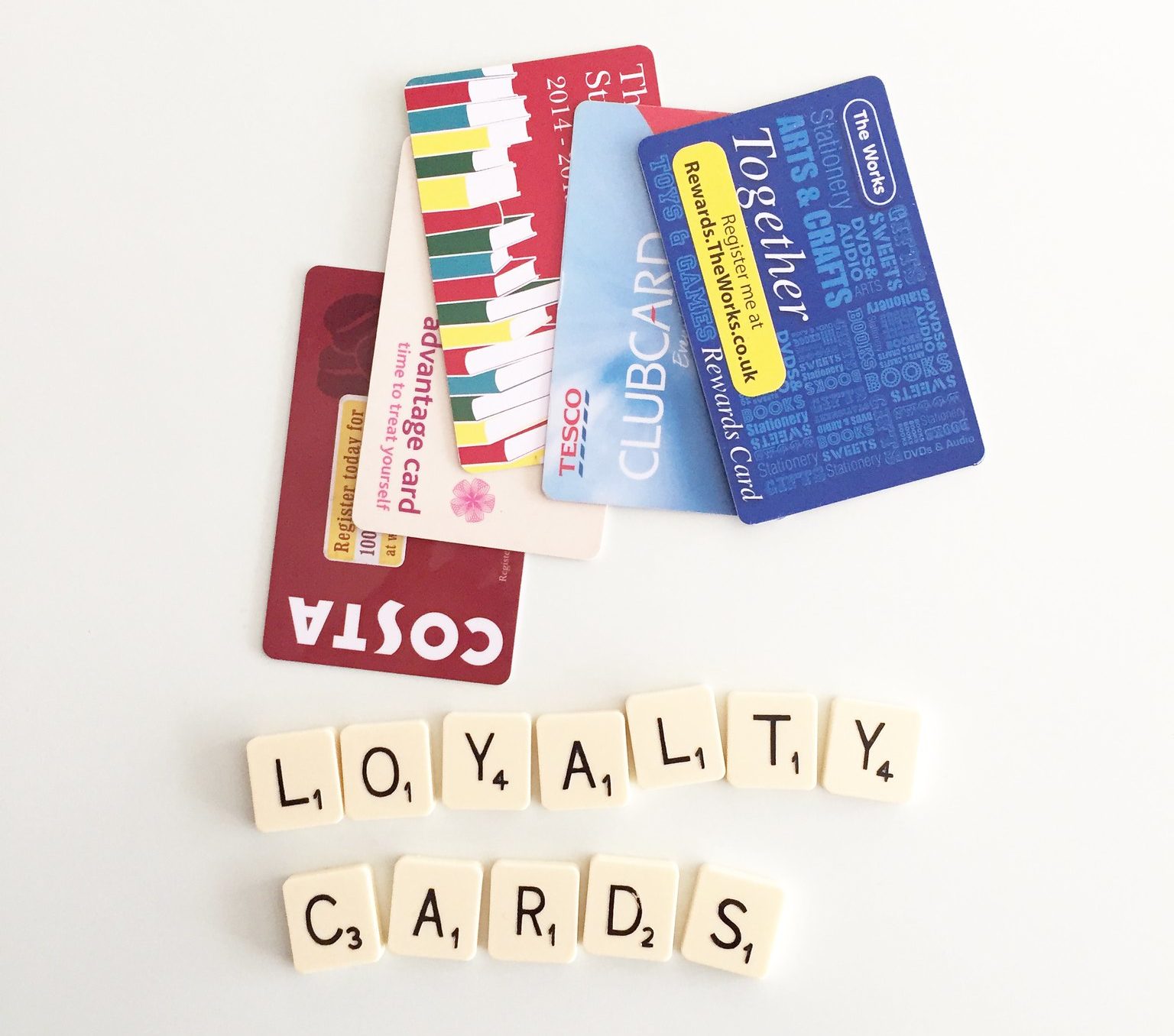9.4: Loyalty and Customer Relationships
- Page ID
- 9356
\( \newcommand{\vecs}[1]{\overset { \scriptstyle \rightharpoonup} {\mathbf{#1}} } \)
\( \newcommand{\vecd}[1]{\overset{-\!-\!\rightharpoonup}{\vphantom{a}\smash {#1}}} \)
\( \newcommand{\dsum}{\displaystyle\sum\limits} \)
\( \newcommand{\dint}{\displaystyle\int\limits} \)
\( \newcommand{\dlim}{\displaystyle\lim\limits} \)
\( \newcommand{\id}{\mathrm{id}}\) \( \newcommand{\Span}{\mathrm{span}}\)
( \newcommand{\kernel}{\mathrm{null}\,}\) \( \newcommand{\range}{\mathrm{range}\,}\)
\( \newcommand{\RealPart}{\mathrm{Re}}\) \( \newcommand{\ImaginaryPart}{\mathrm{Im}}\)
\( \newcommand{\Argument}{\mathrm{Arg}}\) \( \newcommand{\norm}[1]{\| #1 \|}\)
\( \newcommand{\inner}[2]{\langle #1, #2 \rangle}\)
\( \newcommand{\Span}{\mathrm{span}}\)
\( \newcommand{\id}{\mathrm{id}}\)
\( \newcommand{\Span}{\mathrm{span}}\)
\( \newcommand{\kernel}{\mathrm{null}\,}\)
\( \newcommand{\range}{\mathrm{range}\,}\)
\( \newcommand{\RealPart}{\mathrm{Re}}\)
\( \newcommand{\ImaginaryPart}{\mathrm{Im}}\)
\( \newcommand{\Argument}{\mathrm{Arg}}\)
\( \newcommand{\norm}[1]{\| #1 \|}\)
\( \newcommand{\inner}[2]{\langle #1, #2 \rangle}\)
\( \newcommand{\Span}{\mathrm{span}}\) \( \newcommand{\AA}{\unicode[.8,0]{x212B}}\)
\( \newcommand{\vectorA}[1]{\vec{#1}} % arrow\)
\( \newcommand{\vectorAt}[1]{\vec{\text{#1}}} % arrow\)
\( \newcommand{\vectorB}[1]{\overset { \scriptstyle \rightharpoonup} {\mathbf{#1}} } \)
\( \newcommand{\vectorC}[1]{\textbf{#1}} \)
\( \newcommand{\vectorD}[1]{\overrightarrow{#1}} \)
\( \newcommand{\vectorDt}[1]{\overrightarrow{\text{#1}}} \)
\( \newcommand{\vectE}[1]{\overset{-\!-\!\rightharpoonup}{\vphantom{a}\smash{\mathbf {#1}}}} \)
\( \newcommand{\vecs}[1]{\overset { \scriptstyle \rightharpoonup} {\mathbf{#1}} } \)
\( \newcommand{\vecd}[1]{\overset{-\!-\!\rightharpoonup}{\vphantom{a}\smash {#1}}} \)
\(\newcommand{\avec}{\mathbf a}\) \(\newcommand{\bvec}{\mathbf b}\) \(\newcommand{\cvec}{\mathbf c}\) \(\newcommand{\dvec}{\mathbf d}\) \(\newcommand{\dtil}{\widetilde{\mathbf d}}\) \(\newcommand{\evec}{\mathbf e}\) \(\newcommand{\fvec}{\mathbf f}\) \(\newcommand{\nvec}{\mathbf n}\) \(\newcommand{\pvec}{\mathbf p}\) \(\newcommand{\qvec}{\mathbf q}\) \(\newcommand{\svec}{\mathbf s}\) \(\newcommand{\tvec}{\mathbf t}\) \(\newcommand{\uvec}{\mathbf u}\) \(\newcommand{\vvec}{\mathbf v}\) \(\newcommand{\wvec}{\mathbf w}\) \(\newcommand{\xvec}{\mathbf x}\) \(\newcommand{\yvec}{\mathbf y}\) \(\newcommand{\zvec}{\mathbf z}\) \(\newcommand{\rvec}{\mathbf r}\) \(\newcommand{\mvec}{\mathbf m}\) \(\newcommand{\zerovec}{\mathbf 0}\) \(\newcommand{\onevec}{\mathbf 1}\) \(\newcommand{\real}{\mathbb R}\) \(\newcommand{\twovec}[2]{\left[\begin{array}{r}#1 \\ #2 \end{array}\right]}\) \(\newcommand{\ctwovec}[2]{\left[\begin{array}{c}#1 \\ #2 \end{array}\right]}\) \(\newcommand{\threevec}[3]{\left[\begin{array}{r}#1 \\ #2 \\ #3 \end{array}\right]}\) \(\newcommand{\cthreevec}[3]{\left[\begin{array}{c}#1 \\ #2 \\ #3 \end{array}\right]}\) \(\newcommand{\fourvec}[4]{\left[\begin{array}{r}#1 \\ #2 \\ #3 \\ #4 \end{array}\right]}\) \(\newcommand{\cfourvec}[4]{\left[\begin{array}{c}#1 \\ #2 \\ #3 \\ #4 \end{array}\right]}\) \(\newcommand{\fivevec}[5]{\left[\begin{array}{r}#1 \\ #2 \\ #3 \\ #4 \\ #5 \\ \end{array}\right]}\) \(\newcommand{\cfivevec}[5]{\left[\begin{array}{c}#1 \\ #2 \\ #3 \\ #4 \\ #5 \\ \end{array}\right]}\) \(\newcommand{\mattwo}[4]{\left[\begin{array}{rr}#1 \amp #2 \\ #3 \amp #4 \\ \end{array}\right]}\) \(\newcommand{\laspan}[1]{\text{Span}\{#1\}}\) \(\newcommand{\bcal}{\cal B}\) \(\newcommand{\ccal}{\cal C}\) \(\newcommand{\scal}{\cal S}\) \(\newcommand{\wcal}{\cal W}\) \(\newcommand{\ecal}{\cal E}\) \(\newcommand{\coords}[2]{\left\{#1\right\}_{#2}}\) \(\newcommand{\gray}[1]{\color{gray}{#1}}\) \(\newcommand{\lgray}[1]{\color{lightgray}{#1}}\) \(\newcommand{\rank}{\operatorname{rank}}\) \(\newcommand{\row}{\text{Row}}\) \(\newcommand{\col}{\text{Col}}\) \(\renewcommand{\row}{\text{Row}}\) \(\newcommand{\nul}{\text{Nul}}\) \(\newcommand{\var}{\text{Var}}\) \(\newcommand{\corr}{\text{corr}}\) \(\newcommand{\len}[1]{\left|#1\right|}\) \(\newcommand{\bbar}{\overline{\bvec}}\) \(\newcommand{\bhat}{\widehat{\bvec}}\) \(\newcommand{\bperp}{\bvec^\perp}\) \(\newcommand{\xhat}{\widehat{\xvec}}\) \(\newcommand{\vhat}{\widehat{\vvec}}\) \(\newcommand{\uhat}{\widehat{\uvec}}\) \(\newcommand{\what}{\widehat{\wvec}}\) \(\newcommand{\Sighat}{\widehat{\Sigma}}\) \(\newcommand{\lt}{<}\) \(\newcommand{\gt}{>}\) \(\newcommand{\amp}{&}\) \(\definecolor{fillinmathshade}{gray}{0.9}\)Industry Conversation: Ben Day, Director of Sales and Marketing, Blackcomb Springs Suites by Clique
What are the benefits of exceptional customer service?
“In hospitality, word of mouth is incredibly powerful tool to drive increased sales and profitability — even more so with the number of review sites online. Positive customer service leads to repeat business and lots of referrals. For team members, there is a natural euphoria when you make someone else’s day.”

With competition between tourism destinations and businesses continuing to grow, organizations are increasingly focusing on retaining existing customers, which is often less expensive than attracting new ones. This focus forces tourism businesses to look at the customer relationship over the long term, or the customer lifetime value (CLV) cycle, rather than at single transactions only.
It has been proven that it is much less expensive for a company to retain an existing customer than acquire a new one (Beaujean, Davidson & Madge, 2006). Ultimately, successful organizations will strive to build a base of loyal customers who will provide repeat business and may influence other potential customers. Building positive relationships with loyal customers requires planning and diligence for all customer touch points. This may include (Lovelock & Wirtz, 2007):
- Managing service encounters: training staff to provide personal service to customers
- Providing customer incentives: inducing customers to frequent the business
- Providing special service options: offering enhanced services or extra offerings to loyal customers
- Developing pricing strategies to encourage long-term use: offering repeat customers special prices or rate
- Maintaining a customer database: keeping an up-to-date set of records on customer purchase history, preferences, demographics, and so on.
- Communicating with customers: reaching individual customers through direct or specialized media, using non-mass media approaches
Loyalty programs pull together several of these elements to help a business identify, maintain contact with, and reward frequent customers.
Examples of Outstanding Service
If one uses the definition of quality in service as “meeting or exceeding customer expectations” (Kapiki, 2012), then the following examples certainly fit the description. These embody a concept known as a moment of truth (Beaujean, Davidson & Madge, 2006) when a customer’s interaction with a front-line employee makes a critical difference in his or her perception of that company or destination. The characteristics of employees that are best able to create these moments include self-empowerment and self-regulation, a positive outlook, awareness of their feelings and the feelings of others, and the ability to curb fear and anxiety while being able to access a desire to help others. These past winners of the WorldHost customer service award demonstrate this concept in action (WorldHost, n.d.):
Tamara Turcotte of the Sidney Airport Travelodge was nominated after she came into work on her day off after hearing that hundreds of travellers had been stranded after a bomb threat led to the cancellation of ferry trips from nearby Swartz Bay. Reporting for duty, she helped coordinate accommodations for these travellers, looking beyond the hotel (which was full) to the homes of coworkers and friends. Her compassion and swift actions helped turn a negative experience for these guests into a moment of truth about visiting British Columbia.
Agazzi Abbay received word that JetsGo, a small airline and his employer, had suddenly gone out of business, and he was out of a job. Concerned for the passengers that would be stranded by this abrupt end for the airline, he went to the airport to give them the opportunity to share their frustration. Even though he was unable to help their situation, he was able to demonstrate empathy and provide a listening ear as the only former JetsGo employee available across Canada.
Andrea Chan, a guest services supervisor at the Holiday Inn and Suites in Vancouver, received a call from a hotel guest who said she was ill. Concerned because the caller sounded disoriented, Andrea recommended a visit to the hospital. To be sure her guest was safe, Andrea accompanied her to the emergency room and stayed with her until her health and safety were assured — working well beyond the hours of her shift, and returning home the next morning. By treating every guest like family, Andrea created a lasting impression about Holiday Inn and its customer service value.


